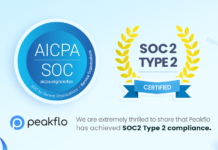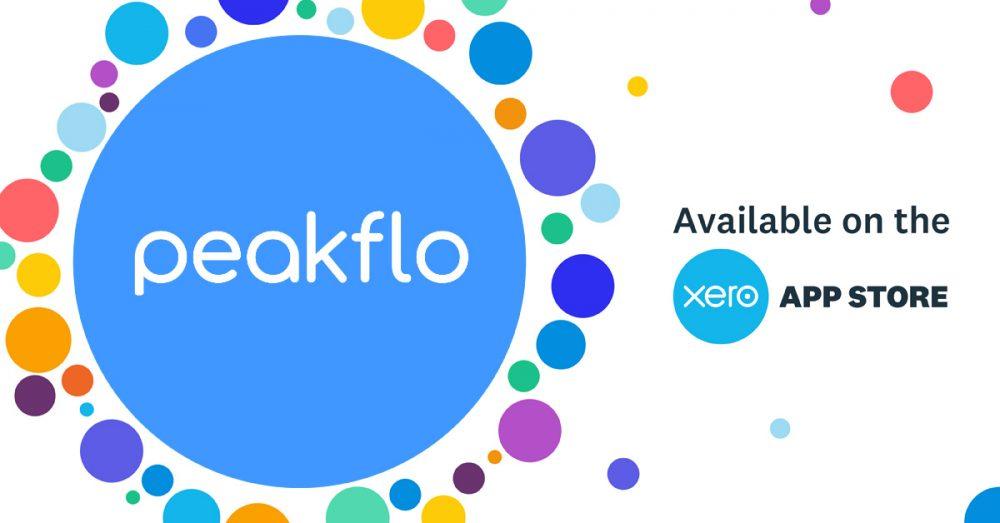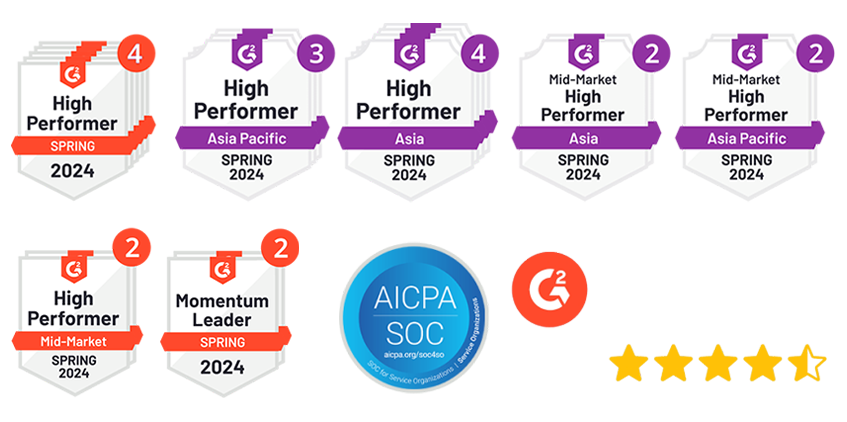Healthcare organizations today face mounting operational pressures. Administrative tasks consume nearly 25% of healthcare professionals’ time, contributing to widespread burnout while driving up costs across the system. Staff shortages persist, patient volumes continue rising, and the complexity of care coordination only grows more challenging.
AI agents in healthcare offer a practical solution to these persistent challenges. The market reflects this growing recognition – projections show growth from $28 billion in 2024 to more than $180 billion by 2030. More importantly for healthcare administrators, AI applications could create $150 billion in annual savings for the US healthcare economy within just a few years.
What sets AI agents apart from traditional automation tools? These intelligent systems enhance patient engagement, optimize operational efficiency, and facilitate data-driven decision-making. AI agents equipped with predictive analytics capabilities assist clinicians in making more informed decisions. A 2024 survey found that approximately 65% of US hospitals are already using AI-based predictive tools in some capacity. Johns Hopkins Hospital provides a concrete example – introducing AI into patient flow management led to a 30% reduction in emergency room waiting times.
Healthcare organizations are recognizing the practical value of this technology. Over 80% of organizations expect to integrate AI technology within the next 3 years. This guide will help you understand the practical applications of AI agents in healthcare, navigate their benefits and challenges, and develop an effective implementation strategy for your organization.
What Are AI Agents and Why Do They Matter in Healthcare
Image Source: SmythOS
AI agents represent a significant shift from traditional software tools used in healthcare settings. These intelligent systems function as autonomous digital workers that can handle complex workflows end-to-end, moving far beyond the simple automation tools most healthcare organizations currently use.
How AI agents differ from traditional automation
Traditional automation in healthcare follows fixed decision trees with predetermined pathways—essentially an “if-this-then-that” logic pattern. These systems work well for repetitive, standardized tasks but struggle when encountering exceptions or unusual cases, typically stopping processing and flagging items for human review.
AI agents operate with greater flexibility. They analyze multiple factors simultaneously, making decisions based on context rather than rigid rules. These systems learn and adapt in real-time, identifying new patterns and adjusting strategies without manual reprogramming. This self-improving capability means they become more effective over time, while traditional automation remains static until manually updated.
The way they handle data also differs significantly. Traditional automation works primarily with structured data in standard formats, whereas AI agents can interpret unstructured information from clinical notes, physician documentation, and varied sources.
Key characteristics: autonomy, reasoning, learning
AI agents possess several defining characteristics that make them valuable in healthcare environments:
Autonomy: They operate independently to perform specific tasks and make decisions without constant human supervision.
Planning and reasoning: Once given a goal, they develop a plan and act on it, adjusting based on new information.
Learning capabilities: They learn from experiences and adapt their behavior to changing circumstances.
Tool utilization: They can access and use various tools and online services to complete tasks.
Memory: Both short-term memory for immediate tasks and long-term memory to examine interaction history.
Examples of AI agents in healthcare today
Healthcare organizations are deploying AI agents across multiple functions with measurable results. Patient triage represents one common application, where AI agents identify appropriate sites of care for non-emergency needs and help patients prepare for upcoming appointments. They also streamline discharge experiences by offering patients tailored follow-up information.
Administrative functions show significant improvement through AI agent implementation. These systems accelerate billing and reimbursement by submitting claims, working with physicians to fix documentation gaps, and drafting appeals. Radiology demonstrates another practical application, where AI tools detect anomalies in medical imaging with remarkable precision.
Security and compliance represent growing areas of AI agent deployment. These systems deliver real-time monitoring, threat detection, and automated responses, ensuring robust data protection and compliance in healthcare settings. AI agents are becoming essential partners for medical professionals by optimizing resource allocation and supporting remote patient monitoring.
How Healthcare Organizations Use AI Agents Today
Image Source: SoluLab
Healthcare organizations are implementing AI agents across several critical functions, achieving measurable improvements in both clinical and operational settings.
Patient Triage and Virtual Assistants
Emergency departments struggle with crowding issues that leave patients waiting for triage assessment. AI triage systems help identify high-risk patients during these critical delays between arrival and nurse evaluation. These systems scan patient data in real-time, assess risk levels, and instantly alert the appropriate clinical teams.
Telehealth providers benefit from AI-powered triage applications that engage patients in focused conversations to recommend the most appropriate care setting and consultation timeframe. Virtual health assistants handle appointment scheduling and provide initial diagnostic support, freeing up approximately 30% of healthcare providers’ time previously consumed by administrative tasks.
Claims Processing and Billing Automation
Claims processing presents ongoing challenges for healthcare organizations. Despite patient expectations for swift medical insurance claims processing, insurers denied 17% of in-network claims in 2021, with some insurers rejecting up to 80% of submissions.
AI agents address these challenges by automating multiple stages of the claims process. These systems extract relevant information from unstructured documents, analyze historical claims data to identify potential fraud patterns, and predict denials before submission occurs. Automation enables healthcare providers to receive timely reimbursements while reducing administrative costs.
Platforms like Agentforce analyze claims in real-time, flagging high-risk submissions and alerting billing teams to potential discrepancies before they become problems.
Care Coordination and Discharge Planning
Discharge planning traditionally requires care teams to piece together scattered information from multiple sources. AI-driven discharge intelligence changes this approach by providing care teams with actionable insights through centralized dashboards. These tools use real-time data about patients’ readiness for discharge, resource availability, and post-acute care needs.
Hospitals implementing AI-driven risk models have seen readmission rates drop by up to 25%. Universal Health Services uses Hippocratic AI’s generative agents to conduct post-discharge follow-up calls, achieving an average patient satisfaction rating of 9.0 out of 10.
AI Voice Agents for Healthcare Communication
Voice agents represent a significant advancement beyond traditional chatbots. Rather than following rigid workflows, these systems produce context-aware responses by drawing from vast medical datasets. They conduct natural conversations that reflect patient concerns, detect nuances in symptom descriptions, and synthesize data from previous interactions.
Voice agents like Kora handle billing inquiries, explain charges, surface payment options, and connect patients with financial assistance programs. Other platforms can wait on hold for extended periods, navigate complex phone trees, and sustain multi-hour conversations with insurance companies.
How AI Agents Improve Healthcare Operations
Image Source: Aidoc
AI agents deliver measurable operational improvements across healthcare facilities. These systems address core operational challenges by automating complex workflows and providing intelligent support for clinical and administrative functions.
Reducing administrative burden
Administrative tasks can be a headache for healthcare professionals. Physicians often spend more than an hour documenting electronic health records for every hour spent with patients. AI agents address this challenge by automating time-consuming processes such as medical documentation, insurance claims processing, and patient scheduling.
AI-powered voice recognition and natural language processing allow clinicians to dictate patient notes while AI structures them into standardized documents. This approach reduces documentation errors and improves record accuracy. Medical facilities implementing these solutions report significant time savings, allowing staff to focus on patient care rather than paperwork.
Enhancing patient engagement
Patient communication represents another area where AI agents provide substantial value. These systems send automated appointment reminders that have reduced no-show rates from 19.3% to 15.9%, helping ensure timely treatment and better utilization of provider time.
AI chatbots handle routine patient inquiries 24/7, providing real-time support and information. This continuous availability addresses a critical gap in patient care – approximately 83% of Americans do not adhere to their prescribed treatment plans, yet 42% believe they would follow them more closely with encouragement between appointments. AI agents are uniquely positioned to fill this communication gap.
Improving clinical decision-making with predictive agents
AI agents equipped with predictive analytics capabilities assist clinicians in making informed decisions by analyzing vast amounts of patient data. These tools provide healthcare professionals with patient history summaries, relevant medical research, and analysis of medical imaging to support more accurate diagnoses.
Researchers at Dresden University of Technology developed an autonomous AI agent for oncology that reached correct clinical conclusions in 91% of cases and accurately cited relevant oncology guidelines in over 75% of its responses. This demonstrates the practical value of AI-powered clinical decision support.
Ensuring compliance and data security
Healthcare organizations face complex regulatory requirements that demand constant attention. AI agents continuously monitor HIPAA compliance through automated audits and real-time examination of compliance status.
These systems scan access logs to detect unauthorized attempts in real-time, recognize unusual data patterns indicating potential security breaches, and ensure only authorized personnel have access to sensitive information. AI-powered compliance monitoring reduces human error, which remains a common cause of HIPAA violations. This proactive approach helps healthcare organizations maintain regulatory compliance while reducing the administrative burden on staff.
Managing Implementation Challenges and Risks
!Comparison of patient Mark’s hospital admission times with and without AI, showing AI reduces time from 237 to 54 minutes.
Image Source: Aidoc
AI agents in healthcare face significant implementation challenges that healthcare administrators must address proactively. Understanding these obstacles is essential for building effective deployment strategies and maintaining patient trust.
Data privacy and HIPAA compliance
Healthcare AI systems require access to protected health information (PHI), creating complex privacy challenges that many organizations struggle to navigate effectively. Public-private partnerships implementing AI have sometimes experienced poor privacy protection, necessitating greater systemic oversight of health data research. Healthcare breaches continue rising across the United States, Canada, and Europe, making data security a persistent concern for administrators.
Re-identification capabilities present an alarming challenge for healthcare organizations. Recent studies have demonstrated that emerging computational strategies can identify individuals in supposedly anonymous datasets. Researchers found algorithms could re-identify 85.6% of adults and 69.8% of children in a physical activity cohort study, even after removing protected health information. This suggests that current “anonymization” techniques may be ineffective against advanced AI tools.
AI agents handling PHI must maintain strict HIPAA safeguards, including data encryption, access controls, and regular compliance audits. However, AI agents often require access to sensitive information across multiple systems to function effectively, potentially exposing this data to unauthorized third parties. Healthcare organizations need robust protocols to balance functionality with security requirements.
Bias and fairness in AI decisions
AI systems can suffer from bias that compounds existing inequities related to socioeconomic status, race, ethnicity, religion, gender, disability, or sexual orientation. This bias disproportionately affects disadvantaged populations through less accurate predictions or underestimating care needs.
Bias emerges throughout the AI development pipeline—from data collection and preparation to deployment. Imbalanced datasets with insufficient sample sizes for certain patient groups lead to worse performance for underrepresented populations. When algorithms trained on hospital data from one country are deployed elsewhere, performance gaps occur due to differences in patient populations and treatment strategies.
The clinical impact of such biases can be severe. An AI algorithm for breast cancer risk prediction might incorrectly assign black patients as “low risk,” resulting in fewer follow-up scans and potentially more undiagnosed cancer cases. Healthcare organizations must implement bias mitigation strategies, including pre-processing data through balanced sampling, incorporating diverse datasets, and keeping humans in the oversight loop.
Managing these challenges requires systematic approaches to data governance, continuous monitoring of AI performance across different patient populations, and clear protocols for addressing bias when identified.
Healthcare Operations Will Continue Evolving
Image Source: PEPID Pulse
Healthcare operations will continue adapting to new technological capabilities. AI agents represent just the beginning of broader changes in how medical facilities manage workflows, coordinate care, and deliver patient services.
Personalized Medicine Through Data Analysis
AI systems are moving beyond general treatment protocols toward patient-specific care strategies. Advanced AI systems will examine genetic makeup, environmental factors, and lifestyle data to develop treatments tailored specifically to individual biological profiles. These agents detect complex relationships among numerous factors, enabling more effective stratification of patients for therapy. Predictive analytics algorithms already help identify which patients will respond to immunotherapy, soon expanding to genome-driven prescriptions that analyze entire genomes to predict drug efficacy and side effect risks.
Digital Twins for Treatment Planning
Digital twins represent a practical advancement in healthcare planning – creating computational models of patient physiology that doctors can test before implementing actual treatments. The Living Heart project, launched in 2014, demonstrates this concept through a validated virtual heart model that examines drug interactions in silico. Similarly, Project BreathEasy developed digital lung twins for COVID-19 patients to optimize ventilator resources. These virtual replicas enable physicians to test interventions without risk, essentially running simulations on digital patient models before deciding on surgeries or therapies.
Distributed Care Networks
Healthcare delivery is expanding beyond traditional hospital boundaries through AI-powered telehealth systems. Intelligent agents working across distributed environments address challenges related to time, distance, and difficult terrains. These decentralized AI systems operate simultaneously across multiple hospital networks while respecting strict privacy constraints. For remote areas, handheld diagnostic tools with built-in AI enable instant triage and local care, changing where and how patients receive treatment.
Collaborative AI Systems
Healthcare operations will benefit from specialized AI systems working together on complex workflows. These multi-agent environments distribute tasks among separate AI entities – one handling appointment scheduling, another updating records, while a third processes insurance claims. This approach enables real-time task allocation based on clinical needs and workload fluctuations. Hospitals implementing such systems report teams saved 45 hours weekly by connecting systems that automatically route information and trigger appropriate next steps without human coordination.
The future of healthcare operations lies in systematic approaches to managing these technological capabilities while maintaining focus on patient care quality and operational efficiency.
How to Implement AI Agents in Your Healthcare Organization
AI agents can deliver significant operational benefits, but successful implementation requires strategic planning and careful execution. Your organization’s approach to adoption will determine how effectively these technologies improve healthcare delivery.
Choosing the Right Use Cases to Begin With
Successful AI implementation starts with identifying high-impact workflows. Look for complex processes involving multiple touchpoints and manual handoffs that could benefit from automation. Rather than deploying scattered AI pilots across departments, focus on whole domains or work areas with clear pain points.
According to McKinsey research, organizations should prioritize applications with the biggest business impact and avoid “pilot purgatory” where experiments fail to scale. Effective starting points often include administrative tasks like scheduling, preregistration, and documentation, which consume significant staff time yet require limited clinical judgment.
Here are practical criteria for selecting initial use cases:
High-volume, repetitive tasks: Focus on processes that occur frequently and follow predictable patterns.
Clear pain points: Target workflows where staff regularly experience frustration or delays.
Measurable outcomes: Choose areas where you can easily track improvements in efficiency or accuracy.
Limited clinical risk: Start with administrative functions rather than direct patient care decisions.
Building vs. Buying AI Agent Solutions
The decision between custom development and ready-made platforms depends on several key factors. Building custom AI solutions offers greater control, flexibility, and data ownership—crucial considerations for healthcare’s unique compliance requirements. Purchasing existing platforms provides faster deployment, lower upfront costs, and easier scalability.
According to industry forums, regulated sectors like healthcare often lean toward custom builds or heavily customized platforms to address specific compliance needs. Many organizations find success with a hybrid approach—starting with vetted platforms for early wins, then building custom layers for unique requirements.
Given that AI agents require intensive computing power beyond what most healthcare organizations maintain onsite, cloud-based solutions have become essentially mandatory.
Integrating with Existing EHR and IT Systems
What makes EHR integration particularly challenging? Healthcare has specific data standards for clinical information exchange, with HL7 serving as a long-standing protocol and FHIR emerging as the modern web-friendly format adopted by many systems.
EHR vendors like Epic are actively building agentic capabilities into their systems, including patient preparation tools that synthesize relevant history before visits. Successful integration may involve embedding AI into edge devices or medical equipment via software development kits.
Organizations must evaluate whether to build “open” or “closed” technical systems based on their existing infrastructure and interoperability needs. Consider these integration approaches:
API-based connections: Use existing interfaces to connect AI agents with current systems.
Data lake strategies: Centralize data from multiple sources for AI analysis while maintaining system separation.
Phased rollouts: Start with one department or workflow before expanding organization-wide.
Training Staff and Managing Change
Employee acceptance ultimately determines AI implementation success. Nearly 68% of healthcare groups cite skills gaps as major barriers to AI adoption, while 67% of office workers fear potential job displacement.
Effective change management requires clear communication that emphasizes how AI helps rather than replaces workers. Research shows that AI projects focused on augmenting human capabilities achieve 2.3 times higher worker satisfaction than those aimed at full automation.
Listed below are strategies for successful change management:
1. Identify Change Champions
Successful organizations identify and empower “change champions”—early adopters who demonstrate benefits and address skepticism. These advocates help build trust and encourage adoption across teams.
2. Implement Phased Rollouts
Phased implementation with pilot programs showcasing quick wins builds momentum and trust. Start small, demonstrate value, then expand gradually.
3. Provide Comprehensive Training
Comprehensive training programs covering both technical skills and emotional challenges help staff develop comfort with AI tools. Address both the practical “how” and the emotional “why” of AI adoption.
4. Maintain Open Communication
Regular updates about AI implementation progress, challenges, and successes help maintain transparency and reduce anxiety about change.
Peakflo AI Agents
Peakflo’s AI Agents turn routine finance and ops work into autonomous, continuously improving workflows — from AI browser agents that log into web apps and complete tasks, to voice agents that run collections and follow-ups without human intervention. These agentic workflows come with pre-built templates, generative reports, and self-evaluation loops so your team gets faster results with less setup.
Built to meet existing tools (Slack, ERPs, calendars) and compliance needs, Peakflo helps teams cut manual work, reduce errors, and scale automation across AR/AP and payments — with reported efficiency gains and cost reductions that make a measurable finance impact.
Ready to see Peakflo AI Agents in action? Try a guided tour and explore pre-built templates for the healthcare industry.
A Way Forward
AI agents offer healthcare organizations a practical approach to persistent operational challenges. These intelligent systems provide genuine solutions for reducing administrative burden, improving patient engagement, and supporting clinical decision-making – addressing pain points that have plagued healthcare operations for years.
Healthcare organizations looking to implement AI agents should focus on practical applications that solve real problems. These systems work best when they handle routine tasks, allowing healthcare professionals to focus on what matters most – providing compassionate, personalized care to patients.
AI agents represent practical allies for healthcare professionals rather than replacements. The potential benefits of thoughtfully implemented AI systems make them an essential consideration for healthcare organizations seeking to improve operational efficiency while maintaining quality patient care.
FAQs
Q1. How are AI agents improving healthcare efficiency? AI agents are enhancing healthcare efficiency by automating administrative tasks, streamlining patient triage, optimizing claims processing, and supporting clinical decision-making. They reduce the administrative burden on healthcare professionals, allowing them to focus more on patient care.
Q2. What are some real-world applications of AI agents in healthcare? AI agents are being used for patient triage in emergency departments, virtual health assistance, claims processing and billing automation, care coordination, and discharge planning. They’re also employed in radiology for detecting anomalies in medical imaging and in conducting post-discharge follow-up calls.
Q3. How do AI agents enhance patient engagement? AI agents improve patient engagement by maintaining consistent communication through multiple channels. They send automated appointment reminders, handle routine patient inquiries 24/7, and provide personalized follow-up information. This helps reduce no-show rates and encourages better adherence to treatment plans.
Q4. What challenges do healthcare organizations face when implementing AI agents? Key challenges include ensuring data privacy and HIPAA compliance, addressing potential biases in AI decision-making, integrating AI systems with existing electronic health records (EHR), and managing the change process for staff. Organizations must also carefully consider whether to build custom AI solutions or purchase existing platforms.
Q5. What does the future hold for AI agents in healthcare? The future of AI agents in healthcare includes more personalized medicine based on individual patient data, the use of virtual twins for simulation-based care, expanded telemedicine capabilities, and multi-agent systems for handling complex workflows. These advancements promise to deliver more tailored and efficient healthcare services.










![Why AI Sales Calls Are Making Good Sales Reps Even Better [2025 Guide] ai sales calls](https://blog.peakflo.co/wp-content/uploads/2025/09/65168cf6-3001-4733-8cbc-12d5684cf449-218x150.webp)


































